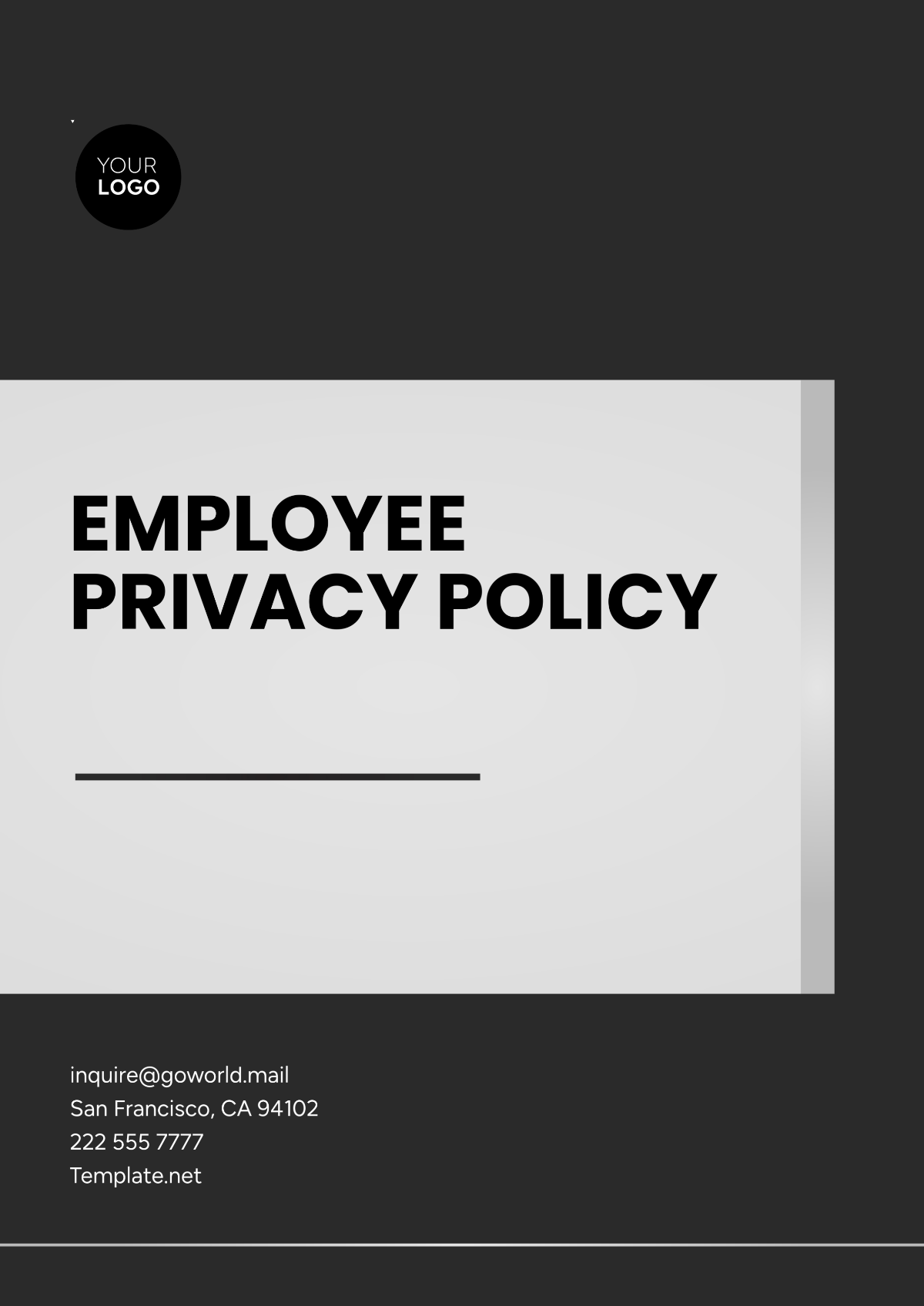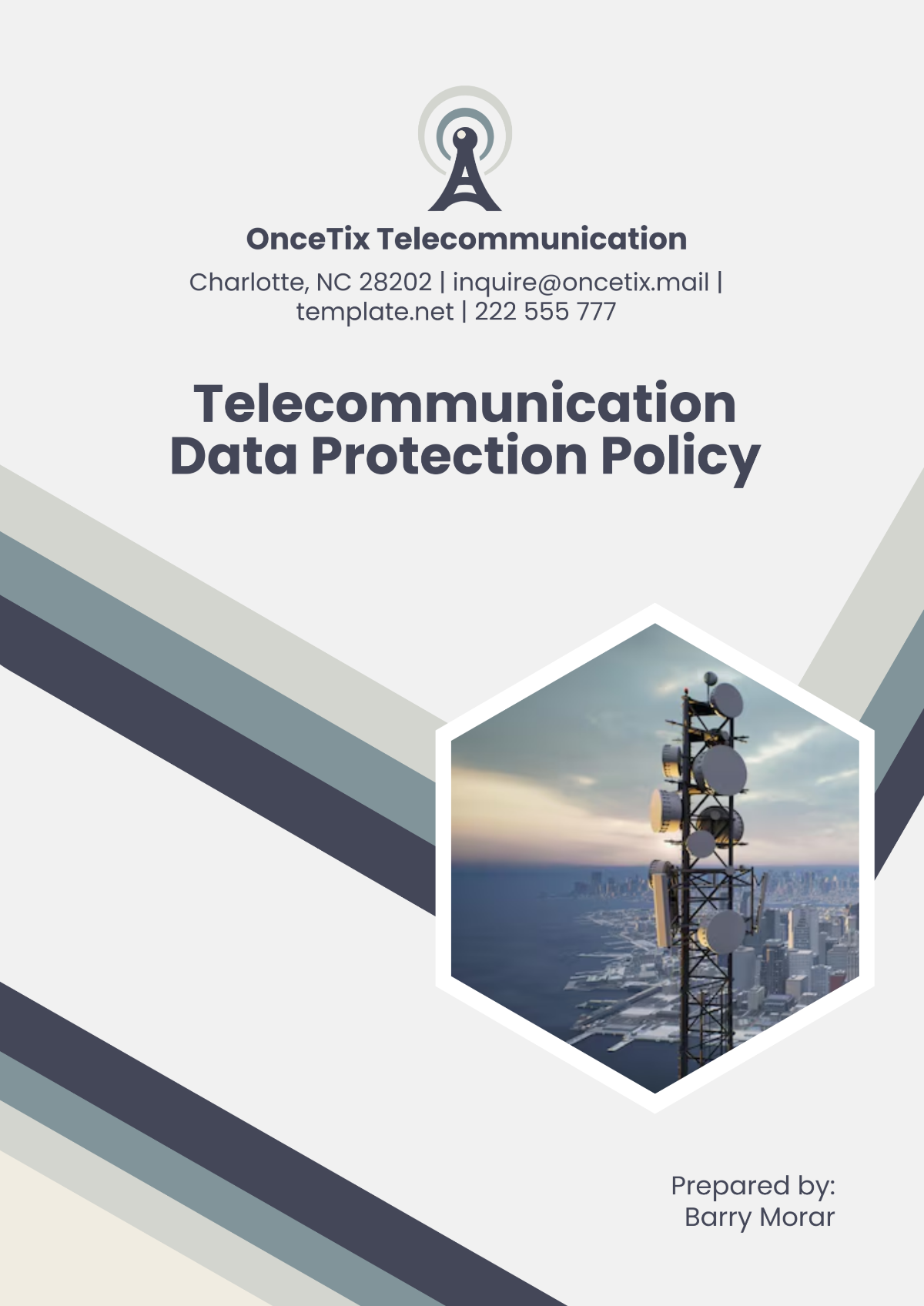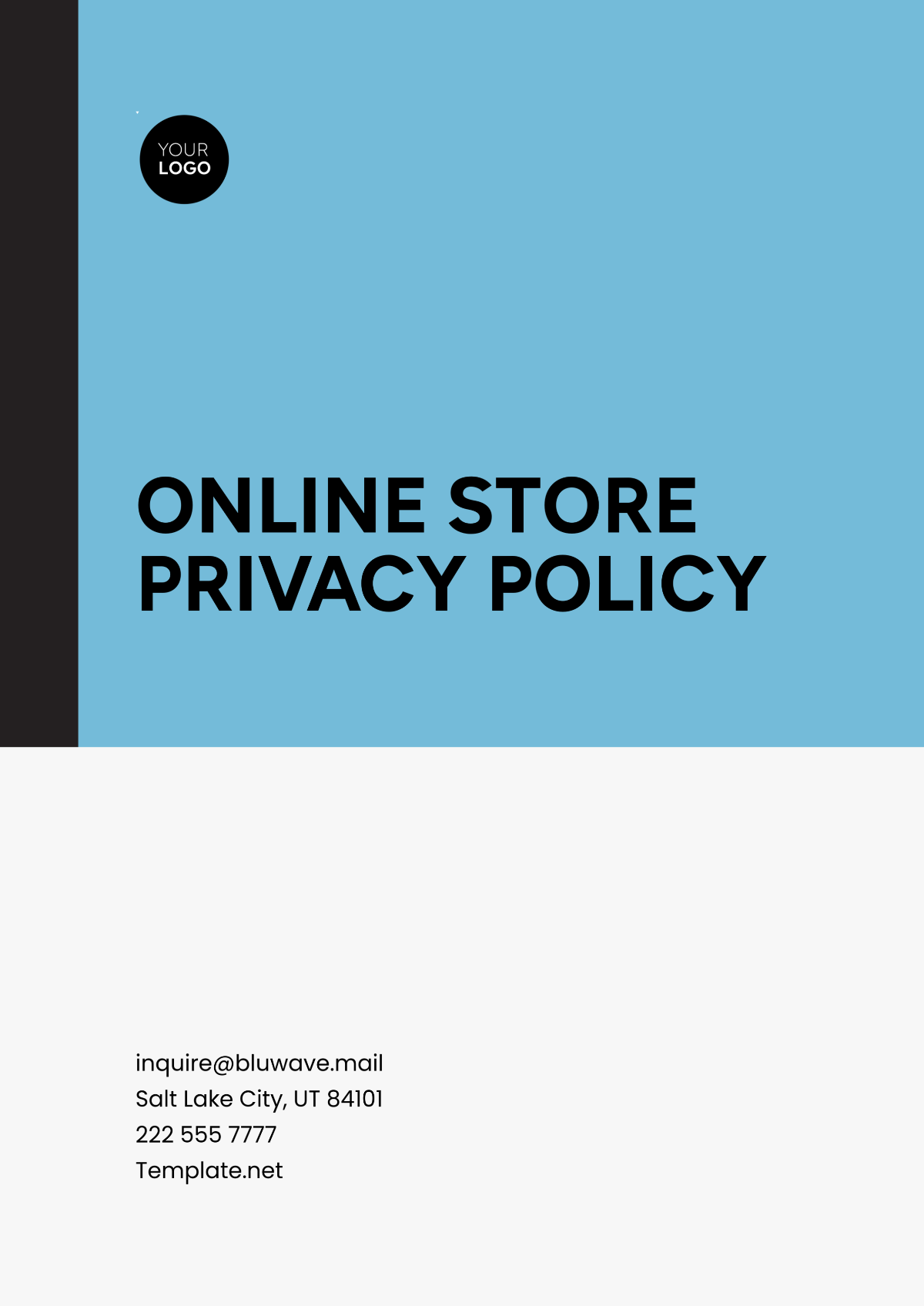Telecommunication Data Protection Policy
I. Introduction
This Data Protection Policy establishes the standards, practices, and responsibilities necessary to ensure the confidentiality, integrity, and availability of sensitive information. By adhering to this policy, we ensure compliance with legal requirements, foster customer trust, and protect our systems from unauthorized access.
Purpose and Scope
This purpose of the policy is to define the measures taken to secure sensitive customer and organizational data. This protects the company’s reputation and operational integrity. This policy applies to all data handled by [Your Company Name], including personal, financial, and operational data.
II. Data Classification
Classifying data is essential to determine the level of protection required. This section defines categories of data and the corresponding security protocols.
Public Data: Information that is publicly available, such as marketing materials. This data requires minimal security measures.
Internal Data: Proprietary information used within the company, such as internal reports. Unauthorized disclosure of this data could impact operations.
Confidential Data: Includes sensitive customer information like account details and communication records. Strong safeguards are necessary for this category.
Restricted Data: Highly sensitive information, such as passwords and encryption keys, must be accessible only to authorized personnel.
Data Ownership: Specific departments or roles are responsible for each data type. This ensures accountability for protection and usage.
III. Data Collection and Use
This section outlines guidelines for data collection and its lawful, ethical use. The purpose is to maintain transparency and build customer trust.
Purpose Limitation: Data will only be collected for specific, legitimate purposes. Collection beyond the stated purpose is prohibited.
Data Minimization: Only necessary data will be collected to reduce exposure and potential misuse. Excessive data collection is discouraged.
Customer Consent: Explicit consent is required before collecting, processing, or sharing personal data. Consent management processes will be implemented.
Accuracy: Data must be accurate and kept up-to-date to avoid errors in service delivery. Customers have the right to request corrections.
Usage Transparency: Customers will be informed of how their data is being used. This includes sharing information with third parties for lawful purposes.
IV. Data Access and Sharing
Controlling access to data is critical for its protection. This section defines protocols for access control and data sharing.
Role-Based Access: Employees will only access data relevant to their roles. This minimizes exposure to sensitive information.
Access Logs: All data access will be logged and monitored for irregular activities. Periodic audits will ensure compliance.
Third-Party Agreements: Partners with data access must sign strict data protection agreements. Non-compliance will result in termination of contracts.
Encryption: Sensitive data will be encrypted during storage and transmission. This reduces the risk of unauthorized access.
Data Sharing Limits: Sharing of data across departments or with external parties must be approved by designated authorities.
V. Security Measures
This section lists technical and organizational measures in place to safeguard data. These measures collectively reduce vulnerabilities and ensure robust defense against external and internal threats. Regular audits and updates will maintain the effectiveness of these systems over time.
Measure | Purpose | Implementation |
|---|---|---|
Firewalls | Prevent unauthorized access to networks | Configured at all endpoints |
Encryption | Protect data during storage and transmission | AES-256 encryption applied |
Multi-Factor Authentication | Strengthen access controls | Required for all systems |
Regular Software Updates | Patch vulnerabilities | Weekly update schedules |
Employee Training | Educate staff on security practices | Quarterly training sessions |
VI. Incident Response
In the event of a data breach, a structured response is essential to mitigate damage. This section outlines the process and responsibilities.
Step | Description | Responsible Party |
|---|---|---|
Detection | Identify breaches through monitoring tools | Security Team |
Containment | Isolate affected systems | IT Department |
Notification | Inform affected parties and authorities | Compliance Officer |
Investigation | Analyze the breach and identify root causes | Incident Response Team |
Remediation | Implement corrective actions | All Stakeholders |
An effective incident response plan minimizes downtime and reduces reputational damage. Clear roles and responsibilities ensure that breaches are handled swiftly and effectively.
VII. Data Retention and Deletion
This section establishes guidelines for how long data is retained and the secure deletion of outdated records.
Retention Period: Data will be retained only as long as necessary for business or legal purposes. Retention schedules will be documented.
Deletion Protocols: Outdated or redundant data will be securely deleted to prevent unauthorized access. Standardized deletion tools will be used.
Legal Requirements: Data retention will comply with local and international laws. Non-compliance may lead to penalties.
Archival Data: Critical data required for historical analysis or compliance will be archived securely. Access will be restricted.
Audits: Periodic audits ensure adherence to retention and deletion policies. Audit findings will guide continuous improvements.
VIII. Employee and Contractor Responsibilities
Data protection is a shared responsibility among employees and contractors. This section defines expectations and accountability.
Training Requirements: All employees and contractors must complete mandatory data protection training. Training programs will be updated annually.
Reporting Obligations: Employees must report any suspicious activity or breaches immediately. Timely reporting prevents escalation.
Confidentiality Agreements: All personnel must sign agreements to uphold data confidentiality. Non-compliance will result in disciplinary action.
Access Management: Employees must not share their login credentials or access unauthorized systems. Violations will be monitored and penalized.
Continuous Learning: Staff are encouraged to stay informed about evolving threats and protection techniques. The company will provide resources for skill enhancement.
IX. Policy Review and Amendments
This section ensures the policy remains relevant in a technological and regulatory industry.
Annual Review: The policy will be reviewed annually to incorporate new legal requirements and technological advancements. Feedback will guide updates.
Stakeholder Input: Employees, contractors, and customers will be invited to provide feedback on policy effectiveness. Inclusive input fosters better practices.
Amendment Process: Any amendments must be approved by the Data Protection Committee. Approvals will be documented for transparency.
Communication: Policy updates will be communicated to all employees and stakeholders. Training sessions will explain significant changes.
Compliance Audits: External audits will validate compliance and recommend improvements. Findings will influence subsequent policy revisions.
The Data Protection Policy demonstrates [Your Company Name]’s commitment to safeguarding sensitive information and maintaining customer trust. By adhering to the principles and practices outlined, the company ensures compliance, operational resilience, and a competitive edge in the telecommunications industry.

















































